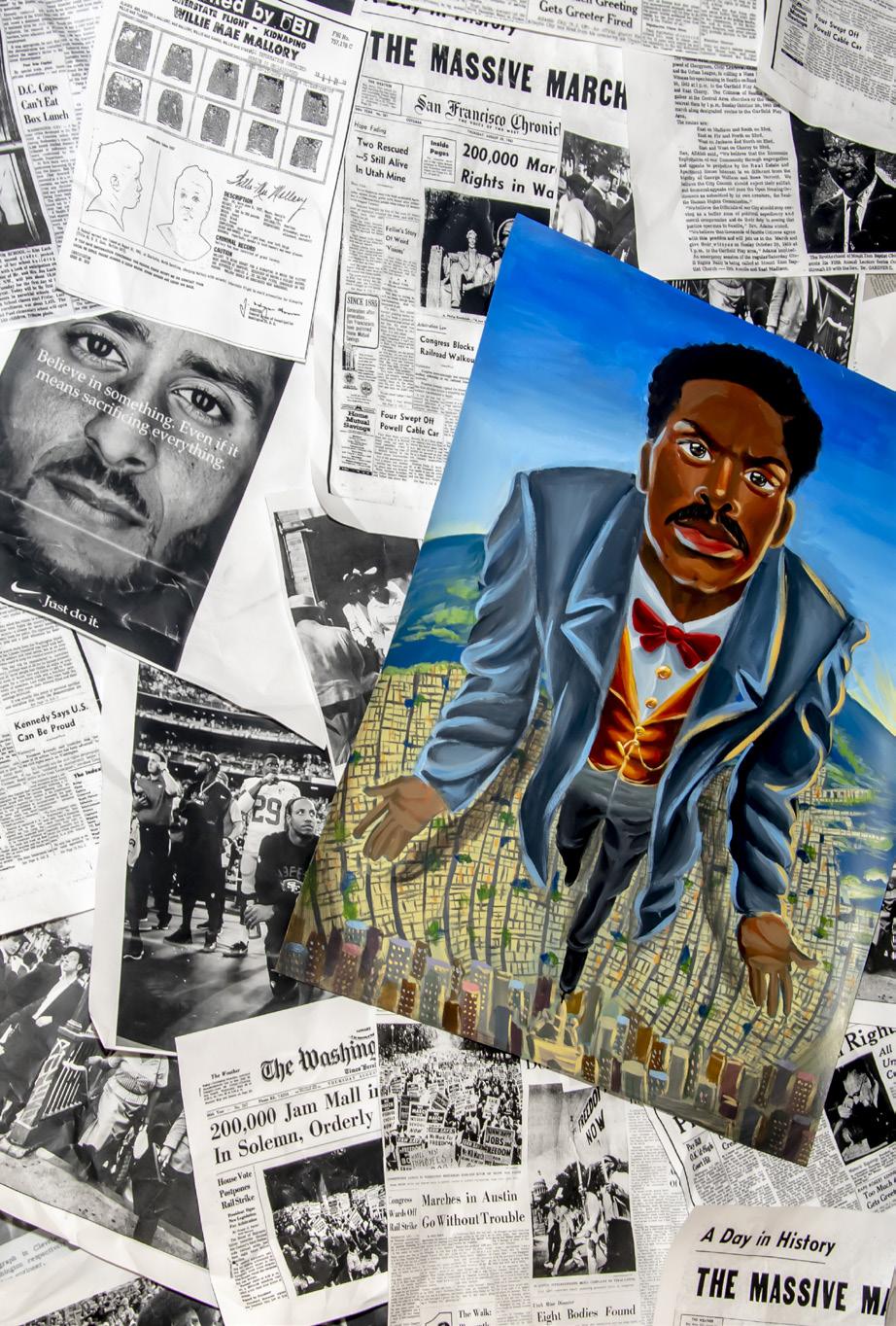
4 minute read
Beyond the Condom: What Are Dental Dams? BSU: Black in Time
from W27 March 2020
BSU BLACK IN TIME
BY LAUREN BROWN
Advertisement
In the first week of Black History month, our very own Black Student Union (BSU) opened its inaugural exhibit “Black in Time.” A display of vibrant colors and culture greeted over 300 visitors on opening night. Towering columns of rich patterns and mannequins draped in borrowed garments from several students, staff and creatives coaxed ones eyes from city’s streets and through the glass windows of FIT’s Pomerantz Center. While the exhibition appeared overnight, it took months of intentional curation. I had the pleasure of speaking with curators Awa Kaday and Kiara Williams about what went on behind the scenes, and the work and the many hands it took to showcase such an evolution of culture. “It’s been eight months in the making,” says Awa, “...to gather, source and connect...But we only had a week to put it together.”
The exhibit space consists of carefully curated sections that focus on different aspects of Black history and those who influenced it–– exploring Black culture’s massive impact on everyday life. “Our way to determine the sections [of the exhibit] was through fashion,” says Kiara, the lead curator on the project, “We just kinda let the artwork apply to the fashion.” Considering the hurried place of the average New Yorker I asked, “If someone only had five minutes what would be the best way to spend their time at the exhibit?” “I would say this room.” Awa was describing a small gallery just off the grand showcase area. “That room catches a lot of people’s eye.” As my eyes studied the space I encountered objects that I recognized like a Barbie doll, but with bronzed skin, and things that rekindled childhood memories.
My experience captured the essence of the room; while Black culture is visible in our day to day world, there is still so much to be explored acknowledged. In the spirit of being a continuous learner, I asked the duo about what they learned while putting things together about black culture. “I know a lot about my history,” Awa said as she explained how the team’s research was more of a refresher course for her, while Kiara talked about how she had to dig deeper and gain more knowledge to be better equipped to educate tour groups who’d visit the exhibit. “People genuinely don’t know who they [black civil rights leaders, artists, etc.] are.” So how did this all come to be? What was the vision and mission to create a time machine of black culture? “We knew we wanted to do an exhibit, but that meant we had to curate it…that’s when people started calling us ‘the curators,’ we didn’t know what that meant [to us], which meant sourcing and organizing.” Being a “curator” meant creating connections and sourcing for people to donate designs and items to fit their intent. This process was something neither of them has tackled, they had to learn things as they went and just simply, make it work; “Do I see myself doing this again? I definitely want to do it again, it was a very big learning experience.” Awa mentioned. With a minor in Art History, Kiara talked about how she’d always been interested in museums and sourcing and putting things together to form a learning and enjoyable experience for visitors. “I always thought, ‘It’d be cool!’ but it is hard work.” They received donations from flower shops, 30th Street Guitars, and the Visual Presentation and Exhibition Design program built the bookshelf that is part of the display. The exhibition was an all in task, “We asked for everything, even a wall that they said wasn’t a part of the space.” Awa laughs. Everywhere you look there are enticing works of art from students to vinyls of classic black artists donated from the photography department.
“Everyone really had a hand in it...people really believed in our vision. It was all in our heads and now it’s here. We’re business students not art students.” Often when starting with a thought, the outcome can be hard to see. When asked about how they thought the event was received, “We didn’t know it was gonna be that big...and everyone told us that, but we have never done anything like this in the art world.” The final product of the successful event was not easy. In conversation, Awa and Kiara talked about frustration and time constraints when it came to putting the exhibit together. “At the end of this journey, we realized that it’s truly a community project.” With the help of several BSU members staying late and giving an extra hand, we can see the excellent exhibit that stands now, until March 7th.
In light of recent events related to the FIT community and racial awareness, it is important to be educated in Black Culture - which has had a massive influence in fashion and the world we live in today. There’s no better moment than the present to go “Black In Time”! ■









